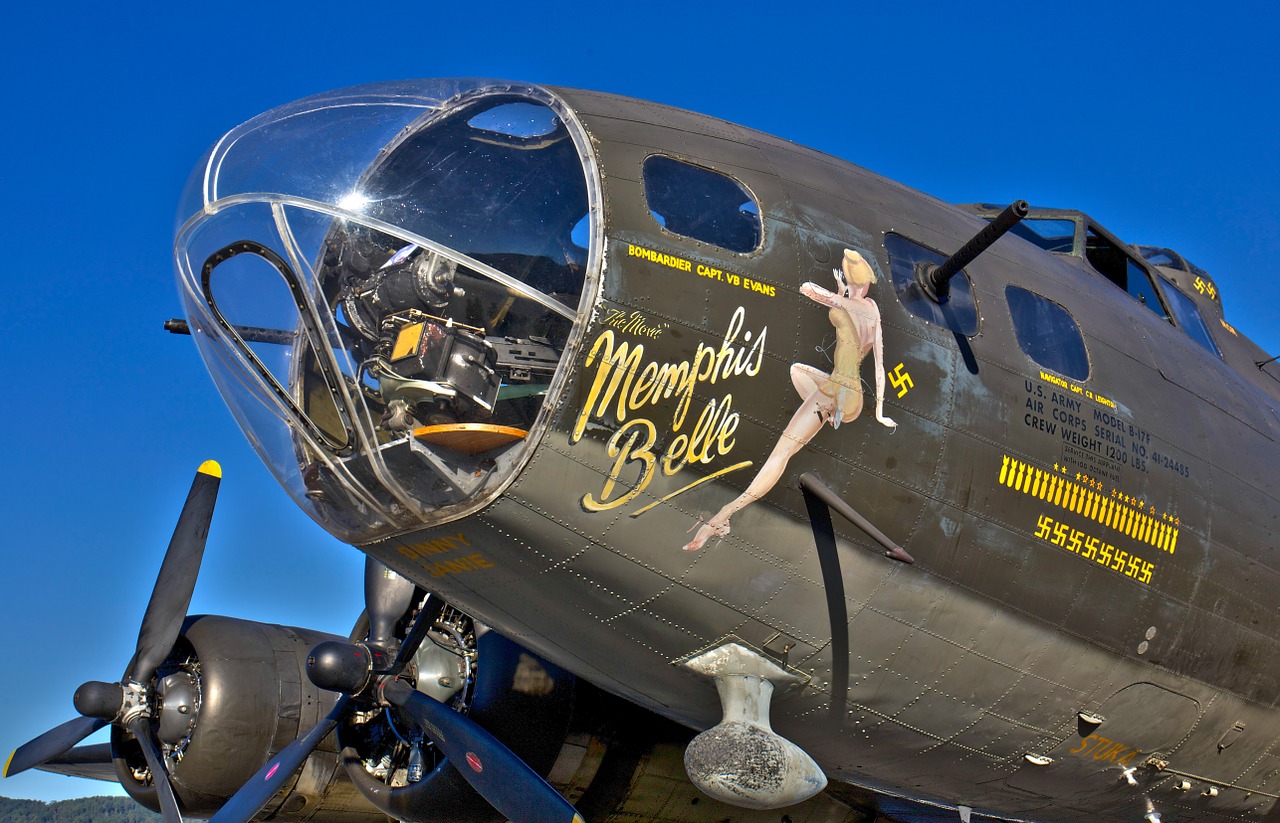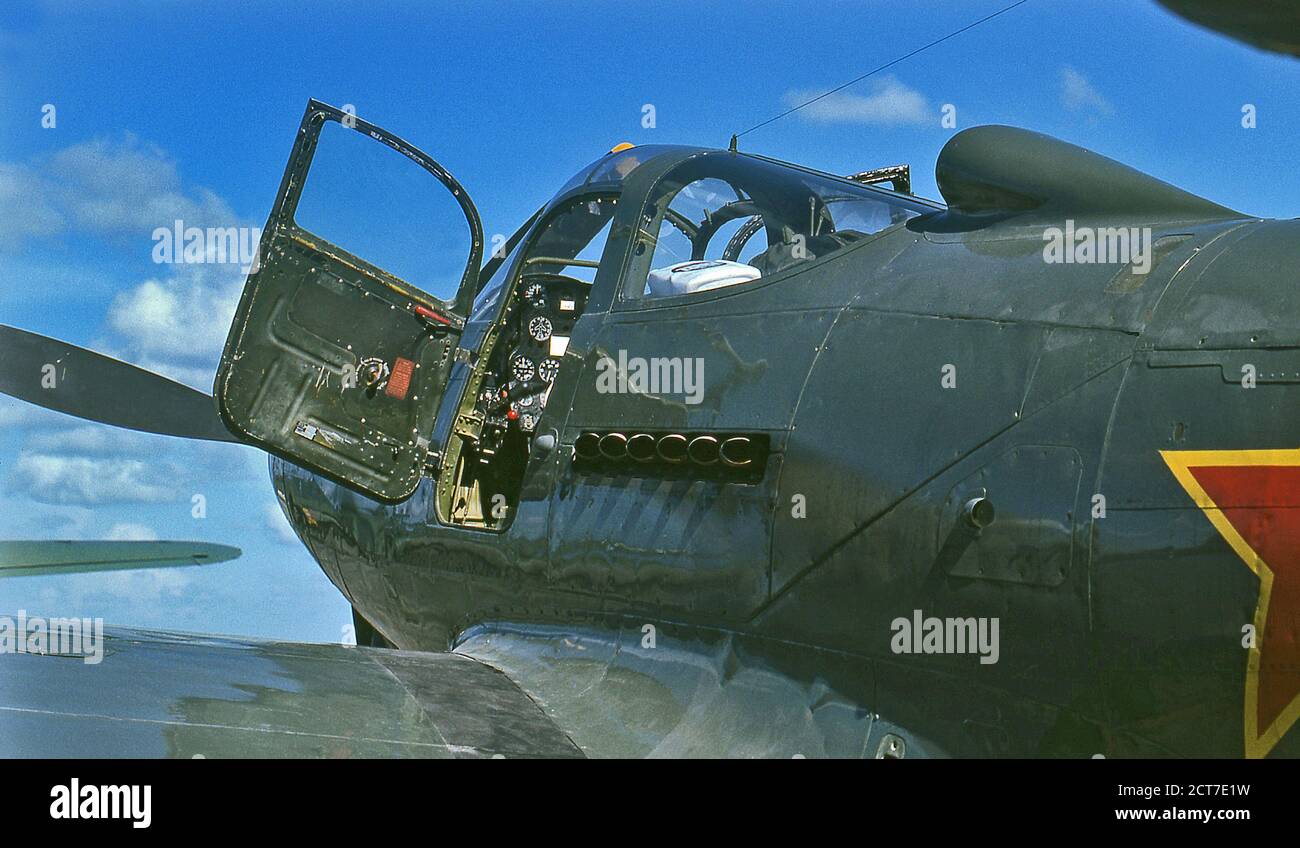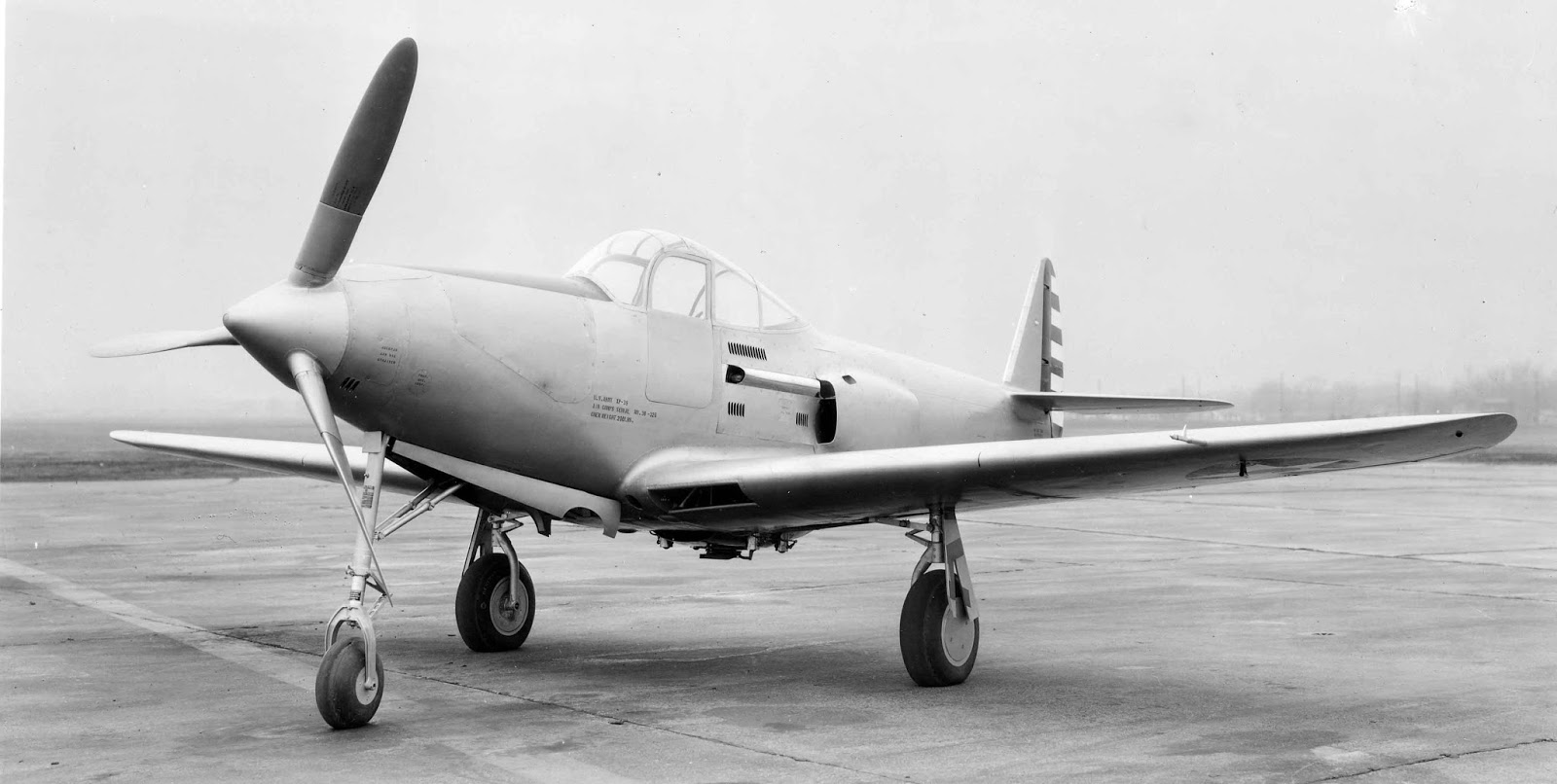Bell Aircraft Ww2 - Faced with their own ongoing difficulties, Bell eventually completed 50 production Airacomets, 20 P-59As and 30 P-59Bs. Each was armed with one 37 mm M4 cannon and 44 rounds of ammunition and three .50 cal. machine guns with 200 rounds per gun.
The P-59Bs were assigned to the 412th Fighter Group to familiarize AAF pilots with the handling and performance characteristics of jet aircraft.[5] By 1950, all examples of the Airacomet were no longer airworthy. Over time, disposal of the aircraft included use as static displays, instructional aids in military training and use as static targets.
Bell Aircraft Ww2

While the P-59 was not a great success, the type did give the USAAF experience with the operation of jet aircraft in preparation for the more advanced types that would shortly become available.[6] The 13 service test YP-59As had a more powerful engine than its predecessor, but the improvement in performance was negligible with only a five mph increase in top speed and a decrease in service-before-overhaul time.
After World War Ii
One of these aircraft, the third YP-59A (S/n: 42-22611) was supplied to the Royal Air Force (RAF), receiving serial RG362/G, in exchange for the first production Gloster Meteor I, EE210/G. [4] British pilots found that the aircraft compared very unfavorably with the jets that they were already flying.
(The YP-59A also compared unfavorably to the propeller-driven North American P-51 Mustang.) Two YP-59A Airacomets (42-108778 and 42-100779) were also delivered to the U.S. Navy where they were evaluated as the "YF2L-1" but quickly found completely unsuitable for carrier operations.
Bell P-63 Kingcobra was developed by Bell Aircraft when World War II arose. This fighter aircraft was developed by America but used during the 2nd World War by the Soviet Air Force. The whole design of p-63 Kingcobra was based on its predecessor, Bell p-39 Kingcobra.
Bell spent several years out of the aviation industry, but in 1928 was hired by Reuben H. Fleet at Consolidated Aircraft, in Buffalo, New York where he was guaranteed an interest in the company. Before long, Bell became general manager and business was booming, but he still wanted to be able to run his own company.
Design And Development
He knew that, although he could raise local capital, he would not be able to compete with either Consolidated or Curtiss-Wright, the two major aircraft builders also based in Buffalo. Serendipitously, in 1935 Fleet decided to move Consolidated Aircraft to San Diego, and Bell stayed behind to establish his own company, the Bell Aircraft Company, on July 10, 1935, headquartered in the former Consolidated plant at 2050 Elmwood Avenue in Buffalo.

The P-39 performed poorly at high altitudes compared to newer, late-war designs. Most Allied forces thought the Airacobra effective only for ground attack roles, as demonstrated by a few U.S. Army Air Forces units that flew P-39s, such as the so-called Cactus Air Force on Guadalcanal in 1942-43.
However, the Soviet Air Force used their Lend-Lease P-39s primarily in the air-to-air role, where they found it to excel as a front-line fighter against some of the best pilots and aircraft of the Luftwaffe.[2 ]
Indeed, the Soviet-flown P-39s were the main reason that the aircraft is credited with the highest number of individual kills attributed to any U.S. fighter type.[3] After a few years, Bell modified its design under the contract of the Navy.
Development And Design
For testing of flight with low-speed and stand attributes of the high-speed new wing design. Thus, the aircraft had new wings containing adjustable edge slats, edge flaps, plus a pronounced sweep around 35 degrees. Incidentally, Bell was the third major aircraft builder to occupy the site.
The factory complex was originally built in 1916 for the Curtiss Airplane & Motor Company,[1] and during World War I had been considered the largest airplane factory in the world. The Bell Aircraft Corporation was an aircraft manufacturer of the United States, a builder of several types of fighter aircraft for World War II but most famous for the Bell X-1, the first supersonic aircraft, and for the development and production of many important civilian
and military helicopters. Bell also developed the Reaction Control System for the Mercury Spacecraft, the North American X-15 and the Bell Rocket Belt. The company was purchased in 1960 by Textron, and lives on today as Bell Helicopter.
The Bell P-59 Airacomet was the first American jet fighter aircraft, designed and built by Bell Aircraft during World War II. The United States Army Air Force was not impressed by its performance and canceled the contract when fewer than half of the aircraft ordered had been produced.
:max_bytes(150000):strip_icc()/bell-x-1-large-56a61c545f9b58b7d0dff7a2.jpg)
Operational History
Although no P-59s went into combat, it paved the way for another design generation of U.S. turbojet-powered aircraft and was the first turbojet fighter to have its turbojet engine and air inlet nacelles integrated within the main fuselage.
During World War II, Bell also built heavy bombers under license from other aircraft companies at a factory near Marietta, Georgia, just northwest of Atlanta. Online by mid-1943, the new plant produced hundreds of Consolidated B-24 Liberators and Boeing B-29 Superfortress bombers.
In mid-1944, the production of the B-24 was consolidated from several different companies (including some in Texas) to two large factories: the Consolidated Aircraft Company in San Diego and the Ford Motor Company's spawling factory in Willow Run, near Detroit,
Michigan, which had been specially designed to produce B-24s. For the rest of the war, Bell's Marietta plant concentrated on producing B-29s, producing 668 of them by the time the contract expired in the fall of 1945. Bell ranked 25th among United States corporations in the value of wartime production contracts.[5]
Bell went on to design and produce several different experimental aircraft during the 1950s. These helped the U.S. Air Force and the National Advisory Committee on Aeronautics (NACA) explore the boundaries of aircraft design, and pave the way for the founding of NASA and the exploration of outer space.
The X-2 Starbuster achieved Mach 3 (2,100 mph) and a height of 126,000 ft in 1955, blazing a technological trail for the development of spacecraft. Bell YP-59A in flight. X and Y aircraft had rounded vertical stabilizers and wingtips while the production A and B models had squared surfaces.
The YP-59A can be distinguished from the XP-59A because Ys had nose armament. Bell enjoyed much success the following year with the development of the single engine P-39, of which 9,588 were built. Putting their previous experience with Allison engines to good use, the P-39 placed the engine in the center of the aircraft, with the propeller driven by a long shaft through which a 37mm cannon was also mounted, firing through the propeller's spinner.

Due to persistent development and production problems, the original turbosupercharger was deleted from production models, instead using a single-stage, single-speed supercharger, as was standard on all other Allison-powered products, with the exception of the P-38. Bell's first military contract followed in 1937 with the development of the ill-fated YFM-1 Airacuda, an unconventional bomber-destroyer powered by two Allison-powered pusher propellers.
The YFM-1 incorporated ground breaking technology for the time, with gyro stabilized weapons siting and a thermionic fire control system. Including the prototype, just 13 Airacudas were produced, and these saw only limited service with the USAAC before being scrapped in 1942.
As the postwar defense industry downsized, Bell consolidated its operations at the Wheatfield plant, near Buffalo. The aircraft factory in Marietta later became the property of the Lockheed Corporation, which has used it for producing C-130 Hercules, C-141 Starlifter, and C-5 Galaxy transport planes.
Although Bell designed several more fighter plane designs during and after WW II, none of these ever entered mass-production. The P-63 was designed to replace the aging P-39 Airacobra. It was an aircraft that didn't have much success, but it's still a very interesting plane to study.
With its four Browning machine guns and one 37 mm M4 cannon, this is not your average World War II fighter. Perhaps Bell Aircraft's most important contribution to the history of fixed-wing aircraft development would be the design and building of the experimental Bell X-1 rocket plane, the world's first airplane to break the sound barrier, and its follow-on, the Bell X
-2. Note that in a twist on the usual way of designating American aircraft, the following were not different models of the X-1, but rather they were the successive (mostly identical) units of the X-1 program: the X-1, X
-1A, X-1B, X-1C, X-1D, and X-1E. The XP-77 was a small fighter using non-strategic materials; it was not successful. The XP-83 was a jet escort fighter similar in layout to the P-59 that was cancelled. The Bell XF-109 was a supersonic vertical takeoff fighter that was canceled in 1961.

Another version or design that was developed during the time is the XP-63. The innovative design was provided designation as XP-63, and the serials are 41-19511 & 41-19512. Then, there's a 3rd prototype which was ordered – the 42-78015 When it comes to overall dimensions, P-63 Kingcobra is quite larger compared to Airacobra.
Helicopter development began at Bell Aircraft in 1941 with the company's first one, the Bell Model 30 first flying in 1943. Bell Helicopters became the only part of Bell Aircraft still producing aircraft when Bell was purchased by the Textron Corporation.
That part of Textron is now known today as Bell Helicopter Textron. After a series of successful helicopter designs, the UH-1 Iroquois became the most noted helicopter of the War in Vietnam, and Bell Helicopters still designs and manufactures helicopters today.
As a teenager, Larry Bell saw his first plane at an air show, starting a lifelong fascination with aviation. Bell dropped out of high school in 1912 to join his brother in the burgeoning aircraft industry at the Glenn L. Martin Company, where by 1914 he had become shop superintendent.
By 1920 Bell was vice president and general manager of Martin, by now based in Cleveland, OH. Feeling that he deserved part ownership, in late 1924 he presented Martin with an ultimatum. mr. Martin refused, and Bell quit.
Textron purchased the Bell Aerospace division on 5 July 1960. Bell Aerospace was composed of three divisions of Bell Aircraft, including its helicopter division, which had become its only aircraft-producing division. Bell Aerospace Textron continued to play a significant role in NASA's mission to land men on the moon in the 1960s.
Bell designed and built the Reaction Control system for Project Mercury's Redstone command module and a similar system was incorporated into the North American X-15 space plane. NASA selected Bell to develop and build the LLRV Lunar Landing Research Vehicle, three of which were built in the early 1960s to train the Apollo astronauts to land on the moon.
Bell also designed the rocket engine used in the Apollo LEM Ascent Propulsion System, which was responsible for getting NASA's astronauts off the moon. A somewhat larger and more powerful version of the P-39 was produced shortly before the end of World War II.
Called the P-63 Kingcobra, this warplane addressed many of the shortcomings of the P-39, although it was produced too late in the war to make any significant contribution. 2,971 P-63's were built between 1943 and 1945, many delivered to the Soviet Union.
Also, by that time, the Army Air Forces already had the superior P-47 Thunderbolt and P-38 Lightning fighter-bombers. Before the development of P-63 Kingcobra, there were some other designs that were developed, and these include XP-39E, XP-63, and Swept-wing L-39.
XP-39E was said to be faster compared to standard Airacobra since it can even reach an optimum speed of 621 km per hour. at 21680 feet during tests. But this model is also noted as inferior to the stock P-39 Airacobra when it comes to all aspects.
Because of this reason, there was no order for its massive production. There are lots of operators from different countries who operate this Bell P-63 Kingcobra. Some of them are the French Air Force (France), Air Forces of the US Army, Royal Aircraft Establishment (United Kingdom), Air Force of the Soviet Union, and the Air Force of Honduras.
bell bomber plant ww2, world war 2 bombers, bell aircraft history, world war 2 aircraft carriers, p 39 aircraft, bell aircraft marietta georgia, bell bomber plant definition, bell jet fighter
0 Comments